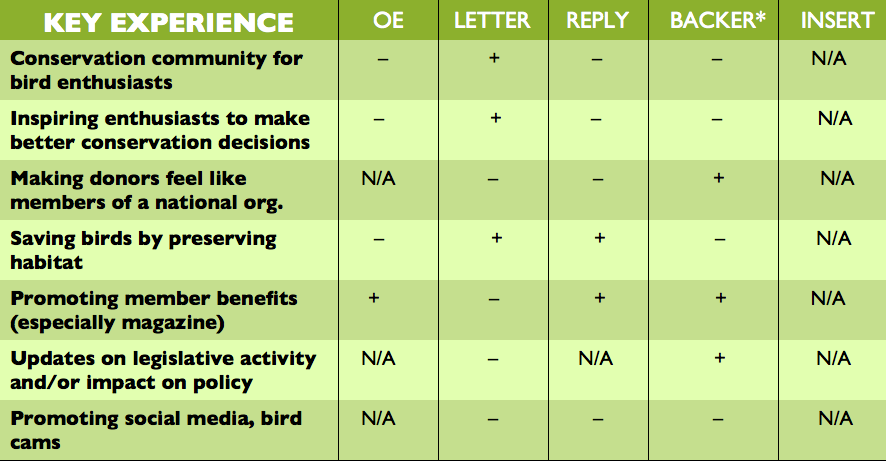Forcing or forging a relationship? Part 5: what’s your real message? Or, how to be relevant
- Written by
- Charlie Hulme
- Added
- June 18, 2015
Six major international development charities were asked a very simple question: what’s the reason donors support you as opposed to your competitors? Each gave their answer. Then a cross section of donors was asked a similar question: what is the reason you give to this charity and not the others?
Not once did the answer the charities gave match the answer their donors gave.
All those charities could merge and nobody would blink. Each organisation went about fundraising for their mission believing they were one thing; in the minds of the people paying for that mission they were something completely different.
Your donors don’t feel as close to you as you think they do
You can easily check how you compare. Just ask your telephone agency to record the number of upgrade calls where the donor doesn’t know that she, or he, supports you. Or the number of reactivation calls where donors have no memory of supporting you. The number will be embarrassingly high.
We talk as if we are close to our donors. But you’ll rarely hear one who talks of us in the same way.
How can this be? The answer is pretty simple: we know what we want from donors, but we don’t know what they want from us.
Fixing this is simple: ask. Of course you need to ask properly, but if you’ve been following this series, you’ll know commitment modelling shows precisely how each ‘experience’ you deliver contributes to lifetime value. One of those experiences is our core message: the things we communicate about.
Even the smallest charity will have a fair number of messages. It isn’t a wild assumption to say some matter more to donors than others. But which do and which don’t? And what if some matter to some donors and not to others?
We don’t ask, so we don’t know. Instead we deliver a one-size-fits-all approach that fits no one well.
It’s an absolute certainty you have different groups on your file with very different needs and preferences. But you don’t know who they are or what they want. All you know is their transactional history and demographic profile.
In some cases what we do – not who we are – will be central to a supporter’s sense of identity. In others we’re a ‘nice to have’, they get what we do (again, not who we are) and that it is important, but then so are a lot of other things.
How much do you really know about your donors?
Let’s say you’re a health charity. Isn’t it a fairly safe bet to assume that those with an immediate connection, i.e. have been personally affected, will have a very different set of needs, preferences and expectations than those who haven’t? And wouldn’t it be the height of insensitivity to tell the person who’s lived that experience the ‘story’ of someone else’s?
How many health charities know this about their donors? How many animal charities know which of their supporters own a pet? How many children’s charities know which of their supporters have children? How many veterans’ charities know which of their supporters served, or have loved ones who did?
Charities always answer this question in a vague way, mumbling something about knowing there’s a high incidence. But when you get specific the results are remarkable.
One health charity quadrupled income from telephone fundraising simply by opening the call with a question to identify each supporter’s connection to the cause. Fundraisers continued the call based on the supporter’s experience, rather than an organisationally pre-determined one. This is intuitively obvious; that we don’t do it says so much about our attitude towards donors.
Relevance and identification
You already classify people into all kinds of groups based on transactional and/or demographic labels, why not try it based on relevance?
It’s not a complex process. First identify the cohorts on your file. Second identify through commitment modelling what matters to each cohort. Thirdly deliver that.
How? It’s child’s play. Take a look at this simple scorecard. These are the seven core messages of a well-known conservation charity. They are core not because the organisation has decided they are but rather their donors have. None of these messages came as a surprise to this charity; they knew they were about these seven things. The trouble is they were getting lost amongst the many, many other messages they put out.

In this scorecard we’re evaluating a mail pack, but it could be anything. It’s not there to evaluate storytelling, design, layout, etc. Simply relevance. Each component of the pack is listed: envelope, letter, reply form, etc. All we need to do is tick or cross whether each piece of the pack is doing its job. So here we can see that three quarters of the message that needs to be got across on the outer envelope isn’t there. Why would anyone open it? If they did open it, more than half the message that needs to be delivered in the letter isn’t there, but plenty that shouldn’t be there is.
When the letter was reworked according to donor preference net profitability rose by 216 per cent
Retention isn’t ever going to happen by deploying a series of tactical tag-ons to the existing programme in the hope that something changes a year or two down the line. It’s about doing a good job today so they stick around tomorrow. No amount of creative technique can compensate for relevance.
© Charlie Hulme 2015
















